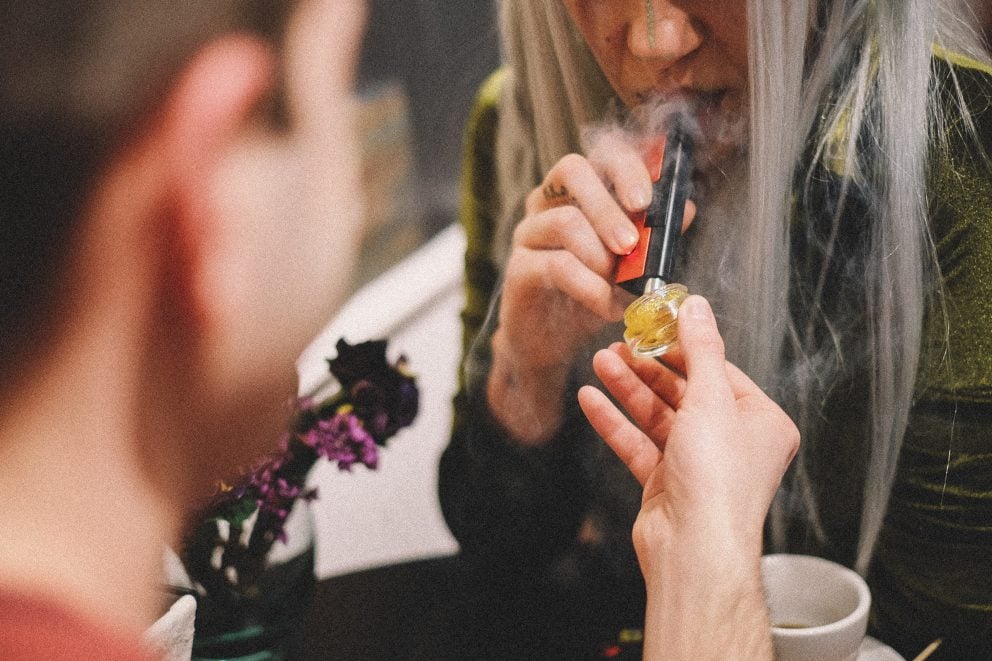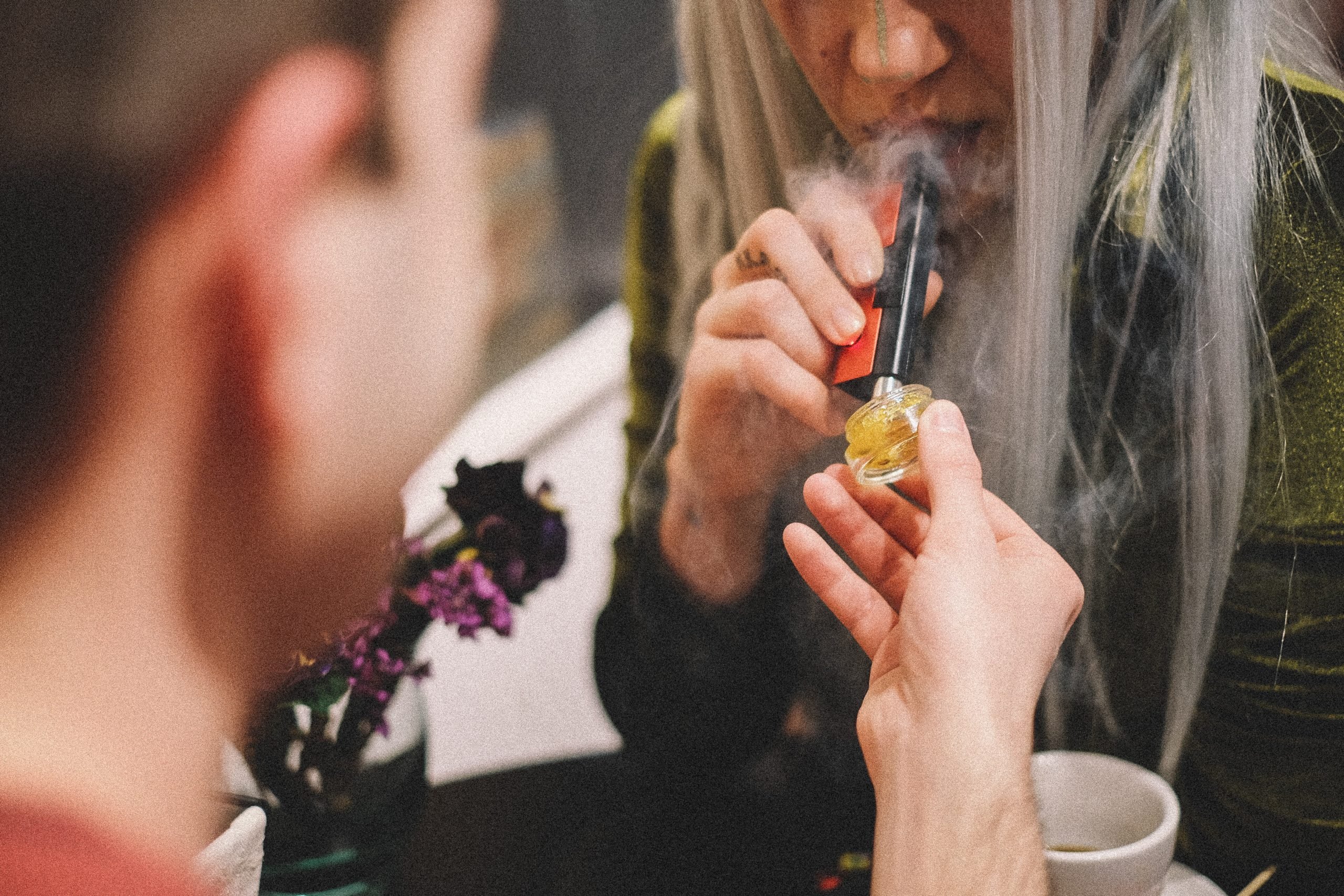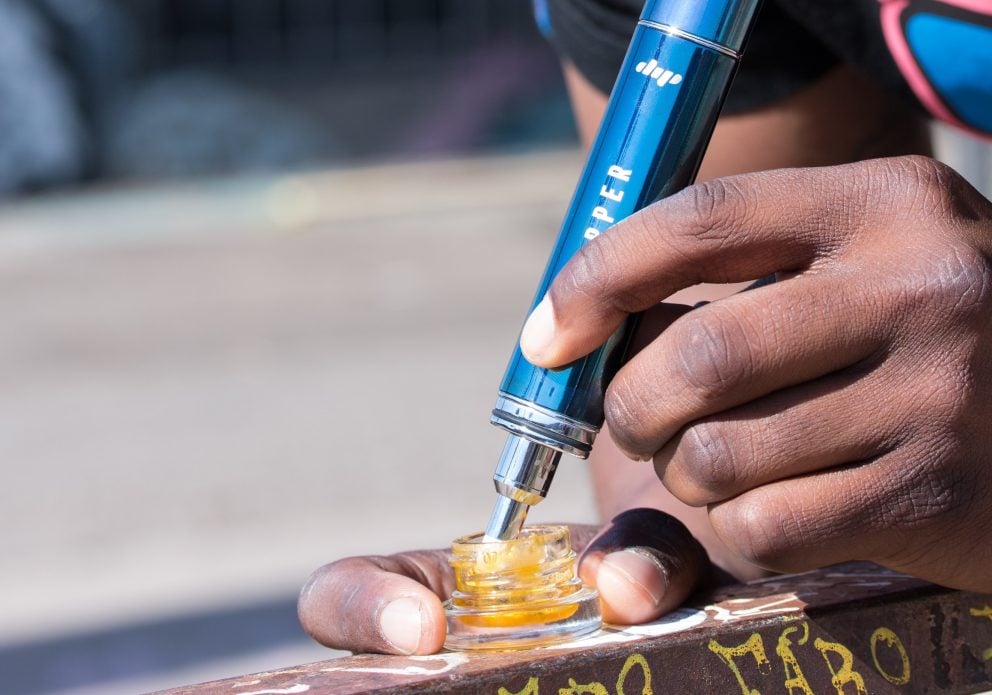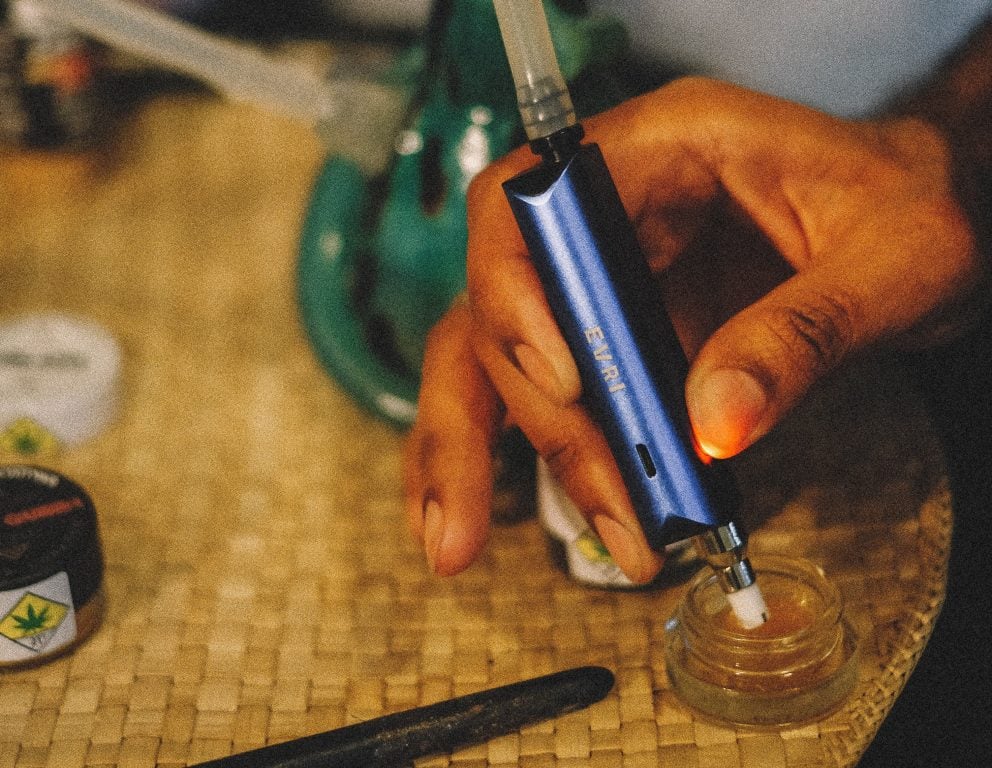
Photo by Dip Devices
Part of what has driven both the popularity of cannabis and its widely expanding medical interest is all of the vital chemicals inside this plant. There are more than 500 compounds found throughout the plant kingdom that engage with the human body. In attempts to retain as many of these compounds as possible, and, of course, increase the THC high, cannabis enthusiasts have found new ways to cultivate concentrations of these chemicals using strategies ranging from ice baths to butane.
The names of these concentrates can be confusing or even intimidating and not always particularly intuitive. What is rosin? How about wax? What is the difference between rosin, wax, and hash? For example, there’s resin, rosin, hash, and wax. Many of these are varieties of dabs. There are even THC crystals, the list goes on.
The goal of these concentrates is removing as much plant material as possible while leaving only those vital chemicals. Removing plant matter is helpful in eliminating the carcinogens created when burning it. With the advent of vapes you can use oil or hash. You can also smoke concentrates with water pipes or dab rigs. These provide a concentrated high and, in many cases, depending on the product, a full spectrum experience
Full spectrum refers to preserving as many of the chemicals in the cannabis to ensure that you get the full benefits of a strain. Each marijuana strain has a unique combination of cannabinoids, terpenes, and flavonoids. These all work in concert to provide you with one unique experience. Scientists and cannabis enthusiasts call this the entourage effect. Rather than looking at how these compounds work individually it’s the entourage of their effects that we focus on.
For example, THC can be energizing, get you high and even give you the “the munchies.” CBD can decrease that high while also helping you relax. The terpene limonene can boost THC’s psychoactive effects. The terpene beta-caryophyllene can help decrease the effects of THC to help you stop being too high. These are all at work to give you what you ultimately end up feeling from your cannabis.
This post will focus on rosin, wax, and hash and will review all of the differences.
[fl_builder_insert_layout id=13138]
What is Rosin Made Of?
Cannabis plants create a natural resin in a part of the plant called the trichome. Trichomes are glandlike plant structures that serve as little metabolite factories. They generate all the compounds we want from weed. Cannabinoids like CBG, THC, and CBD, terpenes like linalool, and flavonoids are all made in trichomes.
If you’ve ever seen crystal formations in buds that’s often the dried resin from these trichomes. Trichomes on the other hand are often found in the bottom level of most grinders. They are small structures and when they’re separated from the plant they’re called kief.
There are different strategies for extracting this resin. Rosin should also not be confused with resin, the product which is cultivated using chemical solvents to dissolve and separate the plant matter from the cannabinoids and other compounds. However, rosin is essentially made by extracting this resin. So how does that work?
What is Rosin?
Rosin is cannabis concentrate made by collecting trichomes then placing them under pressure combined with heat. A press is used to squeeze out all of the resin that’s inside the cannabis plant material. The goal is to get as much of the rosin out without losing many of the cannabinoids and other chemicals.
Heat is one big enemy to cannabinoids. For example it can degrade THC into CBN which rather than make you high will make you want to fall asleep. Cannabinoids exist in an acid form and it isn’t until they’re heated to a certain degree that they convert to what we can enjoy. This process is called decarboxylation.
The delicate process of extracting rosin requires applying enough heat that you don’t decarb the cannabis plant but help get the resin inside to be able to extract it. Rosin can be made professionally using various techniques to separate trichomes and a rosin press. You can also make your own version of rosin at home. Follow the simple recipe in the “How to Make Dabs” section of this post.
Photo by Dip Devices
What is Live Rosin?
Live rosin is made from cannabis plant material that’s cultivated and flash frozen. The goal of live resin is to retain as many of the natural chemicals in the cannabis plant that can be lost when cannabis is cured. There is a drying process from what grows on the vine to what gets to your dispensary.
Light and heat can degrade some cannabinoids so with live products the plant is frozen to preserve as many of these compounds as possible. It’s similar to the logic of cold-pressed juices.
After a day or two of freezing, the cannabis plant is given an ice water bath to separate the delicate trichomes. The ice helps separate the trichomes and then any water from this process is drained and the collection of trichomes is then freeze dried to harden them.
After hardening, these trichomes can be pressed into a type of hash or they can be grated through a process called micro-planing to get the finest consistency of kief. From here the kief blend is put in a rosin press device which applies heat and pressure to pull out as much of the rosin as possible.
From there, cultivators may refine the solution further to make it easier to dab, smoke, or vape or make it available for use.
What is Rosin Used For?
What do you do with rosin once it’s made? Rosin is popular for dabbing. Dabbing is a way to smoke weed where you eliminate much of the plant matter while increasing the high by smoking concentrates. With dabbing you can use a dab rig or a water pipe to heat a dab of rosin and then inhale the cannabinoids which offer a high and the terpenes that offer a flavor and scent profile.
Rosin can also be used to vape. You can find vape cartridges with rosin or you can also dab vaporizers that also may have specific vape cartridges.
Rosin can also be used to infuse into your smoking sesh by being added to your ground cannabis flower. If you’ve ever purchased joints coated with kief rosin can be used to make it stick. It can even be used to create moon rocks.
Rosin is a form of concentrate that’s made without solvents or chemicals. This makes it food grade and able to be factored into making edibles anything from gummies and candies to more traditional foods like baked goods or even savory edibles. Additionally, the terpene profile of your rosin strain can add to the flavor profile of your edible.
Rosin can often be pre-decarbed which makes it easy to incorporate into food. You can seamlessly add it to recipes from a gentle dab on a dessert or a drizzle on a savory item.
What is Hash Rosin?
Hash rosin is rosin made from hash or hashish which is a collection of pressed kief/trichomes and the resin mentioned earlier. Other rosin recipes call for cannabis or trichomes cultivated from cannabis. Hashish or hash is a product that’s been used for centuries and it is often the beginning step to creating rosin.
It’s a collection of trichomes and this resin so by weight it is likely to be more concentrated. Also, hashish can tend to be significantly stronger. It’s renowned the world over for being a super concentrated form of cannabinoids.
What makes hash rosin different from traditional rosin is that rosin is made from a product with heavy concentration of cannabinoids. This ensures that hash rosin is likely to be stronger and more potent because rather than coming from cannabis it comes from a concentrated form or cannabinoids.
Live Rosin vs Hash Rosin
The main difference between live rosin and hash rosin is that live rosin is made from fresh cannabis plants while hash rosin is made from hash. The goal of live rosin is to retain as much of the freshness and some of the phytochemicals that can get lost in the curing process or the cultivation of hash. Life rosin is likely to be more flavorful as it retains most of its terpenes. It can also feel lighter.
Hash rosin is made from an existing concentration of kief/trichomes and resin. Rather than retaining the freshness and terpenes like live rosin, instead it can end up being significantly stronger with a higher concentration of THC.
It can be on the harsher side and likely to make you more high. You can also make hash rosin at home if you purchase or make your own hash. Hash rosin can also leave a bit of residue in your smoking apparatus.
Rosin vs Wax
The differences between rosin vs.wax are pretty similar to the differences between resin vs. rosin. There are a myriad of cannabis concentrates on the market and they’re often either named for the process used to make them like rosin or the consistency of the final product like wax.
Wax is similar to resin. Chemicals are added to the blend of trichomes or cannabis plant material to cultivate a concentrate of cannabinoids and other cannabis phytochemicals. The overall consistency tends to be a bit more waxy like earwax and less fluid than resin.
Rosin can tend to be a bit softer and liquid than wax. It also is likely to retain more of its terpenes and can be a bit more flavorful. Additionally, a major difference between rosin and wax is that chemicals are used to make wax which may make you less likely to want to use it in edibles.
Photo by Dip Devices
Difference Between Rosin and Wax
There are a few differences between rosin and wax. The most obvious is the consistency. Wax is named for its waxy texture while rosin can have a softer texture like butter or a thick lotion. Rosin, specifically live rosin, can retain more of the terpenes and flavonoids which means that it is likely to taste better than wax.
Wax can still have certain chemical remnants from the extraction process which can affect the flavor. This also may be a turn-off to people who want to avoid the chemicals in the resin-making process. Wax can also be likely to be a bit more potent as the focus is on retaining cannabinoids which means that it can have a higher concentration of THC.
Rosin, specifically live rosin, can tend to cost more because of the intricacies of making it. Both collecting from live cannabis plants and some of the intricacies in the process can increase labor costs.
Wax is made similar to resin and oftentimes the result of the chemical-infusion process can potentially be sold as resin, wax, or shatter depending on the consistency of the final product. Resin is more liquid with wax being waxy while shatter can be more hard like candy.
Final Thoughts
Cannabis is a thriving worldwide industry with countless products popping up. Rosin, live rosin, and wax can all sound confusing to the new medical patient. However, all of these products help cannabis users find the experience, compound blend, and ease of use.
Rosin retains many of the beneficial compounds of cannabis without adding any chemicals that could put your health at risk. After all, if you’re using medical marijuana it’s likely for health reasons. Additional products like resin, wax, shatter and even crystalline can help you find the right product for you.
Before you dip your toe in the cannabis waters, get your medical marijuana card today to save money on taxes and get input from your doctor about how to use cannabis.



